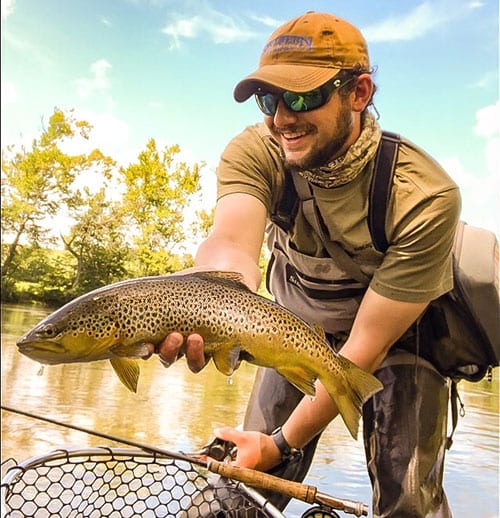Note: The opinions expressed here are based on my own experiences and understandings of nature. This is not meant to try and solve an issue with multifaceted causes, but rather provide insight into unknown consequences that can arise from our best intentions.
The old adage “no good deed goes unpunished” can be applied to just about any sort of pursuit, even fishing and to some greater extent, conservation efforts. I would adopt both of these things as my own passions, and to what I have devoted my life towards. In my short time here on this earth, I have witnessed the far-reaching effects of what human involvement has had on our rivers and fisheries here in Western North Carolina, for better or worse. In both aspects, I feel as if a plague of nearsightedness has clouded our perceptions as to what it means to protect our rivers and the fish species we pursue within them. Slapping a label on a watershed such as “wild and scenic river” or whatever seems fitting, is at times about as effective as putting a sign on the chicken coop that says “no foxes allowed.”
Let me clarify: designating protected areas to prevent occurrences such as development or resource extraction is necessary for the health of our rivers, and I’ll happily stand behind such endeavors. However, when I look at the current state of fisheries and waterways that have already been labeled as protected, there’s a commonality between them all. These places are getting loved to death, in a literal sense of the phrase. While we have successfully prevented the onslaught of development from impacting these areas, we’ve invited, with open arms, the droves of human traffic that was otherwise unseen in those environments.
I strongly attribute this to the advancement of the information age. We have never lived in such a time as to where maps, trailheads, fishing locations, etc. have been so easily accessible to anyone and everyone. These areas have been, at times, recklessly shared without regard to a habitat’s vulnerability to an influx of human exposure. Watersheds and wilderness areas that, even prior to a protection status, saw little to no people are now flooded with crowds even through the “slow” season of winter. With this population of people come others that do not hold the same mentality as we, who claim these places as our own, do. By this, I mean these places are more of a free taxpayer-funded playground than an untouched wilderness. Fragile populations of game fish are now seeing unprecedented amounts of pressure. Rates of poaching and poor fish handling increase dramatically with a rise of exposure to those who are ignorant of the fact. If this kind of pressure continues unchecked; it will result in the ultimate decline of our local fisheries as a whole.
How can we then, as anglers and conservationists, address this issue? Have many of us thought or even considered the effects of increased human traffic as we proudly publicize our waterways and fisheries? How can we differentiate who then can, or should, have access to these areas based on personal intentions?
To these questions, I honestly have no clear answer. My hope is that by opening a dialogue of conversation we can alter our methods of protection for the rivers and streams we love, to include the prevention of consequences that we might not have even considered. In particular, that of unknown places being taken for granted by those whose only value of nature is that of self-interest.
Ethan Hollifield is an Environmental/Physical Science Teacher and is also a guide for Southern Appalachian Anglers.
